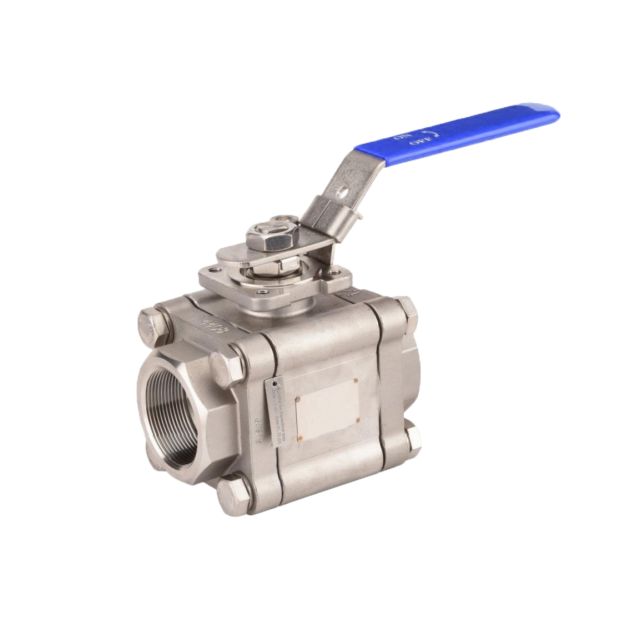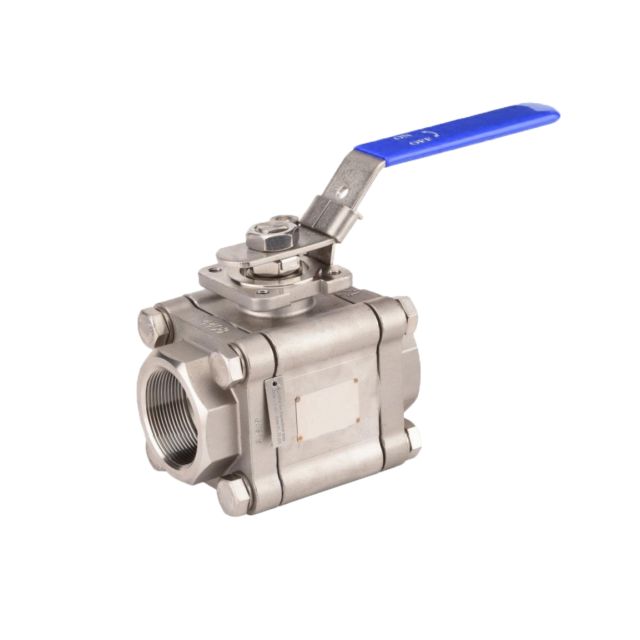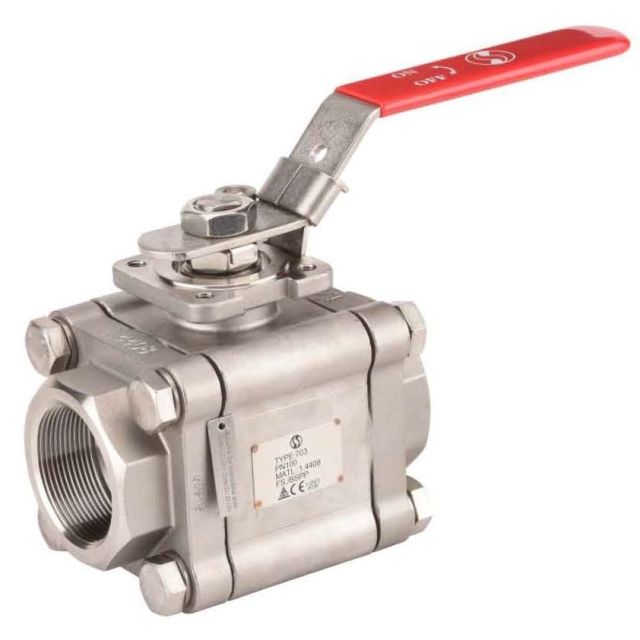Stainless Steel Ball Valves for Water, Oil and Gas (WOG) from an Online Shop
Swiss Fittings has a large stock of stainless steel ball valves, in various dimensions and standards. Some ball valves offered have the standard European thread (ISO7-1), while others have the North American thread (NPT). There are ball valves that are for welding, ball valves with M-profile press ends as well as stainless steel flange ball valves in sizes DN15 to DN100. Besides the differences in connection modes, Swiss Fittings also offers ball valves with different handles. The standard ball valve handle is a stainless steel plate with a blue plastic cover. Swiss Fittings also supplies the 2-pc. ball valve with butterfly handles and the mini-ball valve with full plastic body handles. Some of the ball valves have the ISO-Top 5211 which allows for convenient installation with actuators. Another characteristic with stainless steel ball valves is that they either have a full or a reduced bore.
What is the difference between a full bore and a reduced bore on a Ball Valve?
Swiss Fittings’ 1-pc. ball valve is offered with a reduced bore, while the 2-pc. ball valve has a full bore. While both of the valves can be used for regulating the flow of fluids, there is a difference between the full bore (full port) and the reduced bore (reduced port). The full bore indicates that the hole in the ball of the valve has the same internal diameter as the size of the fitting or pipe it is connected to. A reduced bore indicates that the diameter of the hole in the ball of the valve is smaller than the connecting pipe or fitting. For example, a 1” full bore 2-pc. ball valve will have a hole in the ball that has an internal diameter of 1”. A 1” reduced ball valve would have a ball with a hole that is smaller than 1”. Because of the smaller bore on a reduced bore valve, the cost of producing these valves is less. Full bore valves are used for low flow resistance, while reduced bore valves can be used when there aren’t any concerns regarding drops in pressure.
How are Stainless Steel Ball Valves in Sizes 1/2”, 3/4”, or 1” Produced?
Even though stainless steel valves are more complex from the design and construction than stainless steel threaded fittings, the first production step is the same. A 3D model provides an overview of the individual parts that need to be cast. Most of the casting for ball valves is done through the lost wax casting method. After the individual parts have been cast, such as the body and the stem, the ball needs to be prepared. In recent years some manufacturers have decided to work with hollow balls, in order to reduce the amount of material used, and therefore reducing production costs. Seals (sealing rings) are the focus of most ball valves, as they are a crucial factor in determining how much pressure and what temperatures the ball valve can withstand. Polytetrafluoroethylene, in short PTFE, is the standard material used for the seals. The standard valve, such as the 2-pc ball valve consists of a stainless steel body with three outlets. The top outlet is usually for the stem. It links the handle to the ball. In order for the ball valve not to leak at the top where the stem functions as a transition between the internal valve and the external valve, a packing nut with packing and washers are installed. The ball is usually inserted from one side of the 2-pc. ball valve body, followed by the seat ring and a retainer. The hole in the ball will be cut prior to the in insertion of the ball into the body. At the top of the stainless steel ball there is a little square groove for the stem to connect securely. After the assembly, the ball valve is pressured tested and certified according to EN10204 3.1. There are many different ball valve manufacturers, such as Haitima, Boehmer, and Starfit which all have different designs. At Swiss Fittings we will continue to have the same valve design because we are aware of the importance of reliability and consistency. We have an expert team of engineers that develop new ball valves. For example, the newly 3-pc ball valve with press ends was introduced to the market at the beginning of 2017. Most of the valves offered by Swiss Fittings are in material 1.4408/CF8M.
Stainless Steel 3-Way Ball Valve with L-Port and T-Port Available Online
Swiss Fittings offers the 3-way ball valve in stainless steel, with either the L-Port or the T-Port. The valves are produced according to the EN 10204 3.1 standard and have as ISO-Top 5211 for actuators. The difference between the stainless steel 3 way ball valve T-Port and the 3 way ball valve L-Port is the hole of the ball within the valve. The T-Port has 3 outlets in the ball, allowing all three channels of the ball valve to open simultaneously. The L-Port ball valve has a ball with only two outlets with the cut arranged in an L-shape. This allows the ball valve to open two channels simultaneously in a 90° angle. All ball valves offered by Swiss Fittings are pressure tested.



